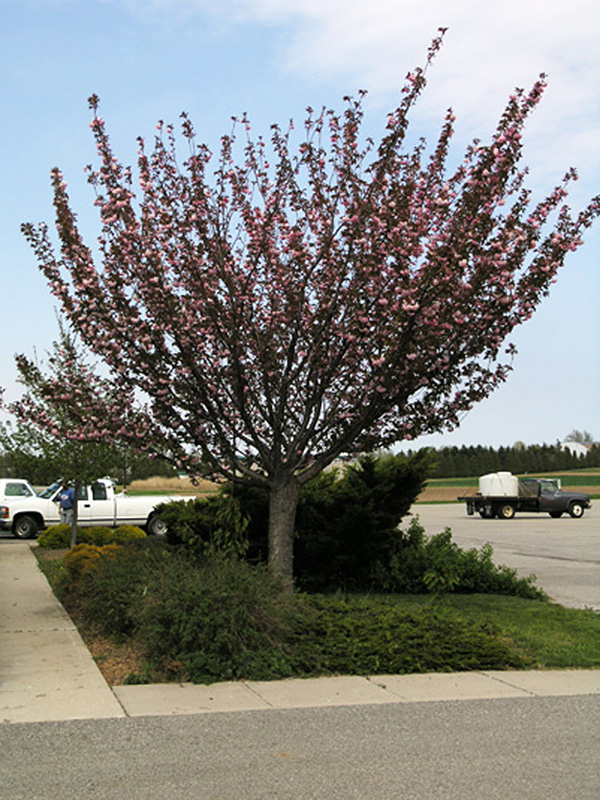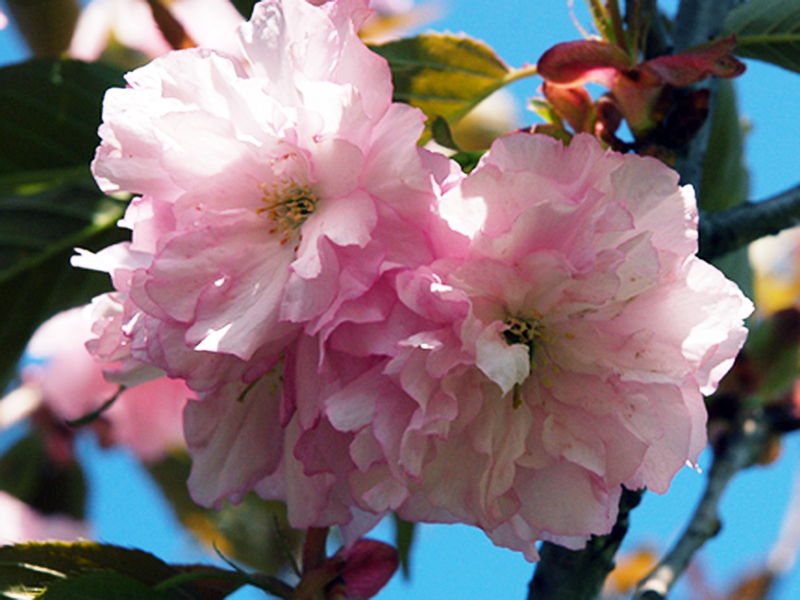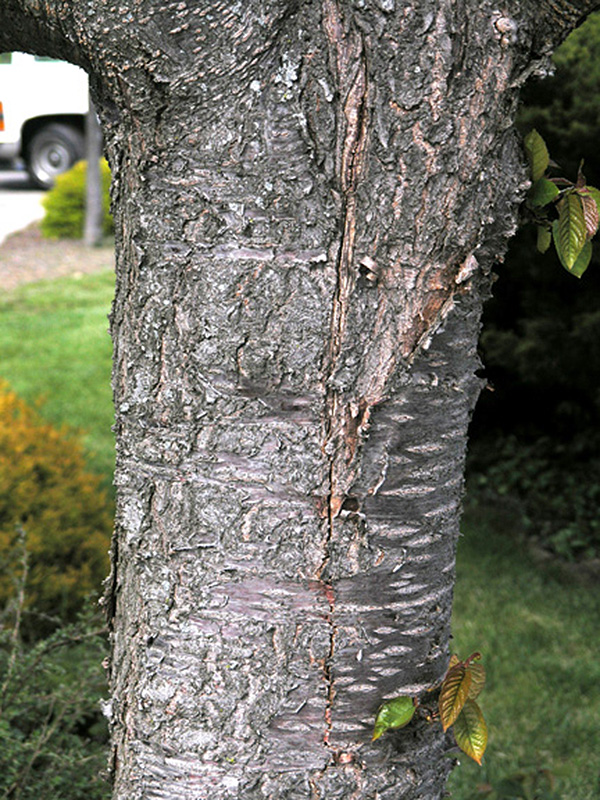
Woody > Prunus > Prunus serrulata > Prunus serrulata 'Kwanzan '
Prunus serrulata
'Kwanzan '
Kwanzan Japanese Cherry
Mike's
Opinion


"
A short-lived tree with an average life-span in cultivation of 15-25 years.
Michael Pascoe, NDP., ODH., CLT., MSc. (Plant Conservation)
"
| Family |
| Rosaceae |
| Genus |
| Prunus |
| Species |
| serrulata |
| Cultivar |
| 'Kwanzan ' |
| Category |
| Woody |
| Type |
| Tree (deciduous) |
| Pronunciation |
| USDA Hardiness Zone |
| 5 - 9 |
| Canadian Hardiness Zone |
| 4a |
| RHS Hardiness Zone |
| H7 - H3 |
| Temperature (°C) |
| (-26) - (-1) |
| Temperature (°F) |
| (-15) - 30 |
| Height |
| 7-8 m |
| Spread |
| 6 m |
Photographs
Description and Growing Information
Flowering Period
| Growth |
| Medium |
| ID Characteristic |
| Bright pink flowers with a light scent. Fruit's anywhere from spring, summer and autumn, a bright red berry. |
| Pests |
| Canker and borer can be serious problems often causing the tree to be short-lived. Prone to multiple diseases like leaf spot, dieback, root rot and insects such as aphids, caterpillars, leaf borers and Japanese beetles. Plum Pox: Symptoms may be confused with other diseases/disorders such as nutrient deficiencies or pesticide injuries. PPV symptoms can occur on leaves, flowers and/or fruit. Faint yellow rings or lines may be found on the leaves. PPV generally does not cause plant mortality however, can reduce the plant productivity and longevity. How to Reduce the Spread and Impact of PPV: 1. Propagate vulnerable Prunus trees and shrubs outside of the affected area a. Isolation is important to protect clean plants from future spread of the disease. b. Propagating and growing vulnerable plants away from the virus-infected area reduce the likelihood of the disease spreading any further. This should be as far away from the quarantined area and any potential sources of the virus. 2. Propagate Prunus plants with virus-free Budwood and Rootstock from virus tested mother trees a. This eliminates the propagation link for viral diseases. 3. Inspect vulnerable Prunus for symptoms a. All Prunus shrubs and trees should be visually inspected for symptoms at lease twice per year and conducted by trained personnel familiar with the virus. b. Any plants found to be infected should not be moved or sold and must be reported to the Canadian Food Inspection Agency immediately. c. Inspections should not be conducted in periods of hot weather (temperatures over 30˚C). 4. Manage aphid vectors a. Aphids are extremely attracted to suckers (vegetative shoots at the base of the tree), these should be removed to avoid aphid colonization, feeding or migration. 5. Plant tolerant and resistant varieties a. When available, grow plum pox tolerant or resistant Prunus varieties. |
| Habitat |
| Horticultural origin. |
| Bark/Stem Description |
| Dark greyish, looks smooth (and is compared to most) but with lenticels across the bark make it feel rough. |
| Flower/Leaf Bud Description |
| Dark brown hint of red, 2-3 cm in length with small scales. |
| Leaf Description |
| Ovate, dark green, they can range between 15-20 cm in length 5-10 cm in width. |
| Flower Description |
| Multiple petaled flower, has a layered appearance with a light floral scent. Flowers in late spring from April to May. |
| Texture Description |
| Medium, typically stays the same throughout the year. |
| Ethnobotanical Uses (Disclaimer) |
| No medicinal or edible uses, ornamental only. |


